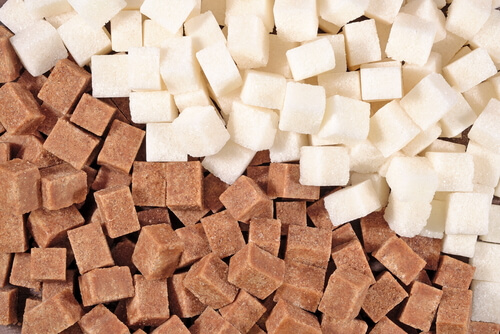A key factor in the beet sugar vs cane sugar debate is how each kind impacts baking.
A key factor in the beet sugar vs cane sugar debate is how each kind impacts baking.
Blog Article
Discover the Uses and Advantages of Beet Sugar Vs Cane Sugar in Your Daily Diet
Discovering the distinctive high qualities of beet and cane sugar exposes greater than just their sweetening abilities; it highlights their distinct effect on wellness and culinary arts. Beet sugar, understood for its subtle taste, is often favored in delicate desserts, whereas cane sugar, with its hint of molasses, adds richness to robust meals. Each kind holds its own nutritional profile and glycemic implications, welcoming a deeper understanding of their functions in a balanced diet regimen and sustainable consumption methods.
Origin and Manufacturing Processes of Beet and Cane Sugar

The distinctive environments and dirt types required for growing sugar beets and sugarcane add to distinctions in their cultivation methods and geographical circulation, influencing the business economics and sustainability of their manufacturing. beet sugar vs cane sugar.
Nutritional Contrast In Between Beet Sugar and Cane Sugar
Despite originating from various plants, beet sugar and cane sugar are nutritionally very comparable, both mostly containing sucrose. Each gives about 4 calories per gram, converting to about 16 calories per tsp. Structurally, both sugars are composed of approximately 99.95% sucrose, with minimal quantities of other materials like dampness and trace minerals, which do not significantly modify their nutritional profiles.

Inevitably, when picking in between beet sugar and cane sugar informative post based on dietary content alone, both offer the same benefits and drawbacks as they are basically kinds of the exact same particle-- sucrose, offering quick energy without various other nutrients.
Influence On Wellness: Glycemic Index and Caloric Material
Discovering additionally right into the effects of beet sugar and cane sugar on health and wellness, it is essential to consider their glycemic index and caloric content. The glycemic index (GI) of both beet and cane sugar is around 65, categorizing them as high-GI foods, which can trigger fast spikes in blood sugar degrees.
Each sort of sugar includes about 4 calories per gram, making their caloric content equivalent. For those monitoring calorie intake, particularly when taking care of weight or metabolic wellness conditions, recognizing this equivalence is vital (beet sugar vs cane sugar). Nevertheless, too much intake of any type of high-calorie, high-GI food can add to wellness concerns such as excessive weight, heart condition, and insulin resistance.
Environmental and Economic Considerations of Sugar Manufacturing
Beyond health and wellness influences, the manufacturing of beet and cane sugar likewise raises substantial ecological and economic concerns. Sugar beet growing has a tendency to require cooler climates and has a lower geographical impact contrasted to sugar cane, which grows in exotic areas.
Furthermore, making use of chemicals and fertilizers in both beet and cane sugar cultivation can result in soil destruction and air pollution, additional impacting biodiversity and local water bodies (beet sugar vs cane sugar). The option go to my blog between cultivating sugar beet or cane typically hinges on local environmental problems and economic variables, making the sustainability of sugar production a complicated issue
Culinary Applications and Flavor Distinctions
While the environmental and economic elements of sugar manufacturing are certainly considerable, the choice in between beet and cane sugar additionally affects cooking applications and taste accounts. Beet sugar, obtained from the sugar beet plant, is known for its incredibly neutral preference.
Walking stick sugar, removed from sugarcane, frequently keeps molasses traces, which present an unique splendor and depth. This slight molasses taste boosts the complexity of baked items, sauces, and marinades. It is especially favored in items where a sugar undertone is wanted, such as in brownies or gingerbread. Additionally, the minor variation in find more dampness content in between beet and cane sugar can affect the appearance and consistency of recipes, making cane sugar a recommended option for certain dishes that benefit from its one-of-a-kind residential properties.

Final Thought
To conclude, both beet and cane sugar have unique origins and manufacturing procedures, providing comparable nutritional profiles with mild differences in sodium material and flavor. While their effect on wellness, especially concerning glycemic index and calories, is comparable, the option between them frequently steams down to environmental, economic aspects, and details cooking needs. Comprehending these facets can assist customers in making educated choices that straighten with their wellness goals and taste choices.
Report this page